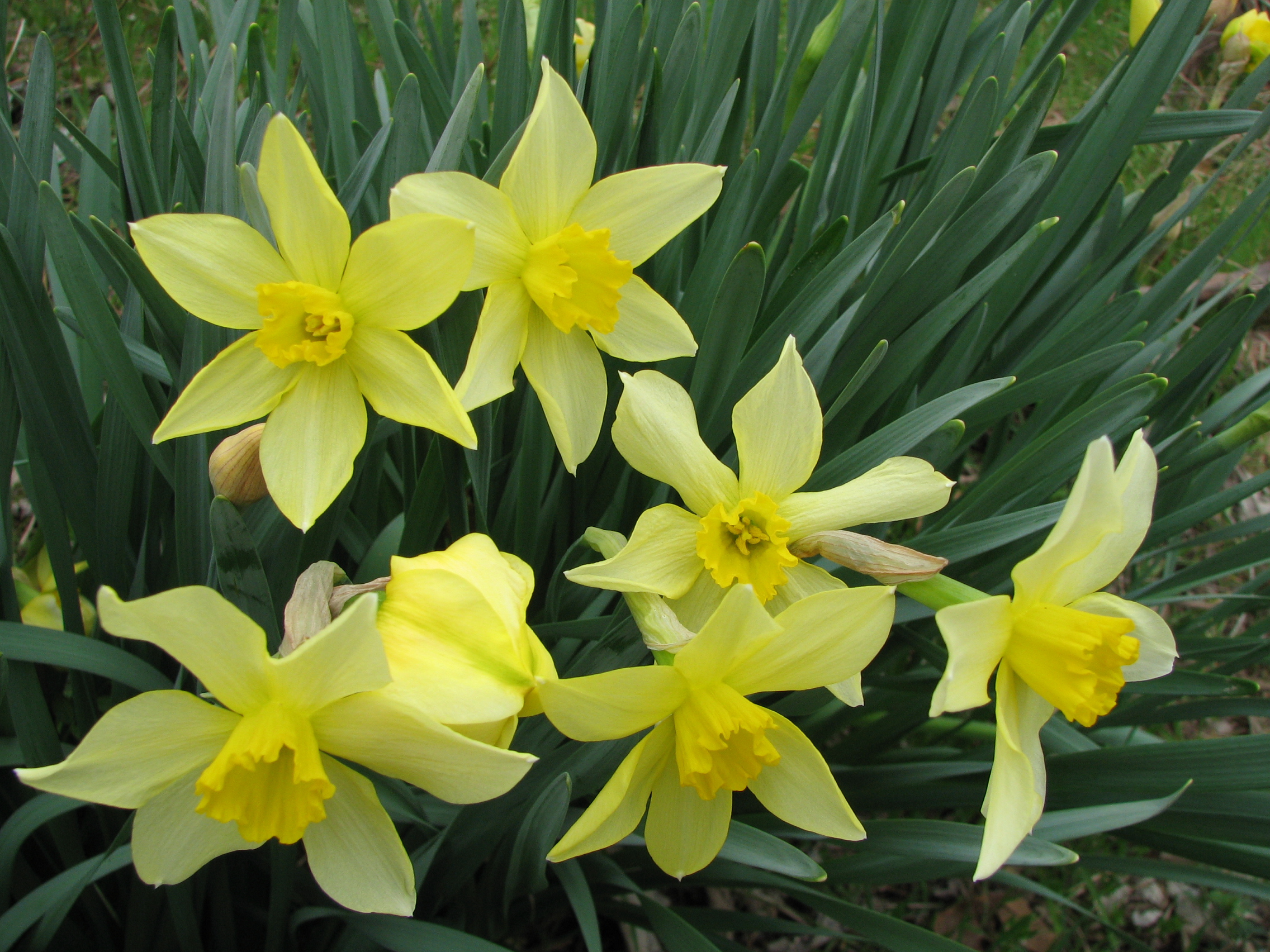Daffodils
Contact
University of Arkansas System Division of Agriculture
Cooperative Extension Service
2301 S. University Ave.
Little Rock, AR 72204

Daffodils
By all accounts, this has been an exceptional year for daffodils. The over-the-top display can be attributed to more blooming stems per clump, a compression of early, midseason and late selections all blooming at about the same time, and the cool nights kept the flowers fresh longer.
Daffodils are a mainstay of Arkansas gardens and have been so since the first European settlers arrived. You hear them called by many names which is a sign that they have been a part of our lives for generations. When I arrived in the Ozarks 50 years ago, some of the older women referred to them as Easter lilies, even though they were fully aware that was only a colloquialism. Back in the day, they did bloom in April around Easter, but today mid-March is more likely to find them showing their color.
Jonquil is a common name used by many older gardeners. Though technically incorrect, it is a pleasant-sounding word that conjures up chirping birds and springtime. In the 1633 edition of Gerard’s Herbal or General History of Plants, the plant Linnaeus called Narcissus jonquilla a century later is referred to as Rush Daffodil or “iunquilia.” The letter “j” is not used in the Old English writing script, but must have been pronounced much as we hear it today.
Gerard mostly refers to these white and yellow flowered beauties as Daffodils. This old word came into use in England in the 1530s and arose as a vulgarization of the Dutch word “de affodil” which is itself a vulgarization of the Latin word “affodilus,” which refers to the asphodels, bulbs that grow in the Mediterranean region.
Gerard uses the technical names of his day to describe the plants, such as Narcissus flore pleno, medio lutea — a plant we know as the double-flowered paperwhite narcissus. The plant we call the long-trumpet daffodil, he calls the Bastard Daffodil and uses the name Pseudonarcissus minor Hispanicus. Linnaeus called it Narcissus pseudonarcissus when he used the binomial system of nomenclature and described it in 1753. Of the word Narcissus, Gerard reports “their narcotic quality was the very cause of the name Narcissus, that is, a quality causing sleepiness.”
That daffodils were a part of the medical pharmacopoeia as well as beautiful to behold is often overlooked. The mucilaginous juice of the bulbs and leaves, according to Gerard, “glew (glue) together very great wounds” and they can be used to treat burns. The bulbs are poisonous as attested by the fact that their foliage is one of the few plants deer avoid eating.
But why was the spring of 2023 such a good daffodil year? To understand this, we need to recall the spring of 2022. Here in the Ozarks, it was a beautiful, relatively cool and rainy spring. Rains continued through late spring which provided ample moisture for developing bulbs to size-up. And, because the season was cool and pleasant, the foliage remained alive and continued producing carbohydrates, which were stored in the developing bulbs. As a minimum, daffodil foliage must remain in place at least six weeks after flowering to nourish the bulbs. But if left alone to naturally ripen and shrivel away, Narcissus leaves usually persist 10 to 12 weeks after blooming.
Any who have dug an old clump of daffodils realize it is a congested tangle of roots with large and small bulbs crowded into a tight space. As Dr. Ed Dale – the late UofA ecologist – once told me, the competition between like kinds is the keenest because they need the same resources at the same time. In a typical year, the smaller bulbs just don’t get the water and nutrients they need to properly size up. Daffodil bulbs must be about an inch in diameter to flower, otherwise they just produce leaves.
There may have been a focusing effect from the midsummer heat wave that struck the region in July. The heat and drought were ideal for hastening the transformation of the growing point buried deep in the bulb from a vegetative meristem to a flowering meristem. This floral transformation takes place after the foliage has died away and seemingly nothing is happening below ground. Somehow this may have triggered the early, midseason and late cultivars to form flower buds at the same time, thus concentrating the spring blooming season into early March.
But regardless of the cause, this was a great season to appreciate the beauty of these tough, dependable flowering bulbs.
